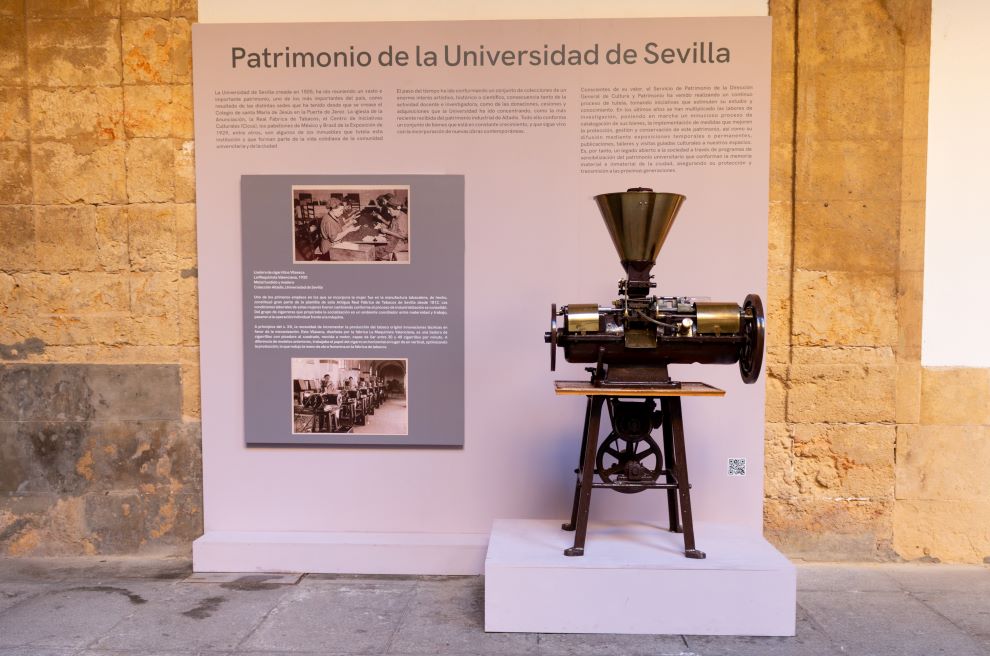
Introduction
The University of Seville founded in 1505, has been collecting a vast and important heritage, one of the most important in the country, as a result of the different headquarters it has had since the foundation of the Colegio de Santa María de Jesús in the Puerta de Jerez. La iglesia de la Anunciación (The church of the Annunciation), the Royal Tobacco Factory, the Center for Cultural Initiatives (Cicus), the Mexican and Brazilian Pavilions from Ibero-American Exposition of 1929, among others, are some of the buildings under the protection of this institution and which are part of the daily life of the university community and the city.
With the passage of time has been shaping a set of collections of enormous artistic, historical or scientific interest, as a result of both teaching and research activity, and donations, assignments and acquisitions that the University has been concentrating on, such as the most recently received from the industrial heritage of Altadis. All of that, shape a collection of assets that is constantly growing and is still alive with the incorporation of new contemporary works.
Aware of its value, the Heritage Service of the General Directorate of Culture and Heritage has been carrying out a continuous process of protection, taking initiatives to stimulate study and knowledge. In recent years, research work has multiplied, launching a thorough process of cataloging assets, implementing measures to improve the protection, management and conservation of this heritage, as well as its dissemination through temporary or permanent exhibitions, publications, workshops and cultural guided tours to our spaces. Therefore, it is a legacy open to society through awareness programs of the university heritage that make up the material and immaterial memory of the city, ensuring its protection and transmission to future generations.
History
One of the first jobs that the women incorporate was in the tobacco industry; in fact, they constituted a large part of the workforce of the old Royal Tobacco Factory of Seville from 1812. The working conditions of these women were changing as the industrialisation process became established. From the group of cigarette-makers that promoted socialisation in a conciliatory atmosphere between motherhood and work, they moved to individual operation in front of the machine.
At the beginning of the 20th century, the need to increase tobacco production led to technical innovations in favor of mechanisation. This Vilaseca, designed by the factory La Maquinista Valenciana, is a cigarette-maker machine with a rolling cigarette squared, motor-driven, capable of rolling between 30 and 40 cigarettes per minute. Unlike previous models, it worked the cigarette paper horizontally instead of vertically, optimising production, which reduced the female workforce in the tobacco factory.
Further Information
Location
Rectorado de la Universidad de Sevilla
C/San Fernando 4
Opening hours
07:00 am to 22:00 pm. Monday – Friday
